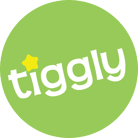 A Q&A with Tiggly founder and CEO Phyl Georgiou. The New York City-based startup, which is a developer of physical toys for toddlers that interact with learning apps on tablets, closed a $500,000 Seed funding round in late October from Indian VC Kae Capital. It was founded in 2012.
A Q&A with Tiggly founder and CEO Phyl Georgiou. The New York City-based startup, which is a developer of physical toys for toddlers that interact with learning apps on tablets, closed a $500,000 Seed funding round in late October from Indian VC Kae Capital. It was founded in 2012.
SUB: Please describe Tiggly and your primary innovation.
Georgiou: We all grew up playing with wooden puzzles and toy cars. Today, children are increasingly playing with tablets. Tiggly is bringing the best parts of classic play to this new digital play experience. Our first product is Tiggly Shapes, inspired by classic wooden puzzle pieces. The shapes are still physical, but the puzzles are engaging apps played on tablets. The interaction of the physical pieces and the apps is where the magic and learning happens. Our design process always starts with the learning objectives we hope to achieve and we test to make sure it is engaging and fun for our target audience. Tiggly Shapes will be available in Apple retail stores throughout the U.S., Canada, Europe and Australia this holiday season and beyond.
SUB: Who are your target markets and users?
Georgiou: Our users are children aged 18 months-to-four years old. We target the youngest tablet users because toddlers need to practice motor skills and spatial reasoning in ways that ‘screen time’ alone can’t achieve. Seventy years of academic theory by the likes of Piaget and Montessori emphasize the importance of this type of physical play. There are also some core learning topics for this age group, like geometry and numeracy, which we believe are best learned through the combination of physical and digital play. Our customers are parents, aunts, uncles, and grandparents—relatives who really care about the way their little one is engaging with the world.
SUB: Who do you consider to be your competition, and what differentiates Tiggly from the competition?
Georgiou: The ‘app-cessory’ market which we fall into is a new one and the market is wide open for startups like us to make our mark. The traditional toy companies like Hasbro and Fisher-Price have tried app-cessories with limited success. So, really, when it comes to ownership of parents’ wallets, we need to convince them to spend money on Tiggly Shapes rather than a few new apps or a new toy. Our challenge is to let consumers know there is a new type of educational play that is available, one that takes the best parts of digital and physical play. Once they do discover us, our long-term competitive advantage is going to be our focus on developing products grounded in educational principles and research.
SUB: You just announced that you’ve raised $500,000 in Seed funding. Why was this a particularly good time to raise funding?
Georgiou: Haven’t you noticed? It’s already Christmas! Well, as a toy company, we started writing our wish list for Santa months ago. But as a hardware business, a lot of cash is spent on production, and so now was a key time to raise capital to ensure our readiness for the holiday rush and beyond.
SUB: How do you plan to use the funds?
Georgiou: Beyond production, the funds will be used for developing new toys and apps. We have two new apps in development that work with Tiggly Shapes, and we will introduce two new toys at New York Toy Fair in February.
SUB: What was the inspiration behind the idea for Tiggly? Was there an ‘aha’ moment, or was the idea more gradual in developing?
Georgiou: The ‘aha’ moment occurred shortly after a friend told me how much his two-year-old loved using his iPad. ‘App-cessories’ had just been introduced into the market, and while existing brands like Barbie, Hot Wheels, and Angry Birds were developing products, almost no one was focused on educational app-cessories. We saw tablets as an opportunity to help toddlers learn skills like spatial reasoning through play, and so we looked for a way to employ tried-and-true research about early childhood development.
As Tiggly has matured, we’ve started to conduct research of our own so that we can design new toys and new apps and contribute to the small but growing body of research data on this topic.
SUB: What were the first steps you took in establishing the company?
Georgiou: Our first task was to build a working prototype to convince investors that we could pull this vision off. It was rough, but everyone could see the potential. We then hired an industrial design firm because we knew the physical pieces needed to be elegant and well-designed to succeed in a crowded toy or gadget aisle. When we demoed the product at Toy Fair in New York in February, we knew we were onto a good thing and have been heads-down focused on our launch for this holiday season ever since.
SUB: How did you come up with the name? What is the story or meaning behind it?
Georgiou: A mix of inspiration and perspiration. I asked my friends for their favorite kid-related words and brands, and heard many variations of the same type of sounding word: ‘wobbly,’ ‘giggle,’ ‘bubble.’ Then I used a formula to generate probably a thousand words with a similar sound, and ‘Tiggly’ was the one that jumped at us. It helped that the domain name was available, and that it is one of the rare words with a toddler-friendly Urban Dictionary definition—as you might guess, it’s a combination of ‘tickled’ and ‘giggly.’
SUB: Do you have plans to seek additional outside funding in the near future?
Georgiou: On the back of what we expect to be a strong holiday season in 2013, we will be looking to raise more money in early-2014.
SUB: What have the most significant challenges been so far to building the company?
Georgiou: Hardware. Hardware is tough from day one. First, you have to prove product-market fit, which is challenging with a beta product and beta apps, and then even after you have strong indications of product-market fit, it’s very hard to scale. We are lucky to have found the support of a truly amazing distribution partner in Apple retail stores, but that’s just one channel. Hardware also has long timelines—it took us 16 months to go from minimum viable product to mass-produced inventory.
SUB: How do you generate revenue or plan to generate revenue?
Georgiou: The upside of hardware is that we have a physical product to sell. In the short-term we plan to monetize by selling Tiggly Shapes. Soon, we’ll also have apps available for purchase beyond the three free apps that come with Tiggly Shapes. That’s the plan for now, although we expect our revenue model to evolve as the product develops.
SUB: What are your goals for Tiggly over the next year or so?
Georgiou: We expect Tiggly Shapes to be one of the hot toys of the 2013 holiday season; and we expect to learn a lot from our early research and our initial customers. In the months to come, our goal is to release more products—both apps and toys. All of these activities are designed around developing a brand that is known for creating the best learning content for toddlers who have access to a tablet.
Tiggly – www.tiggly.com












